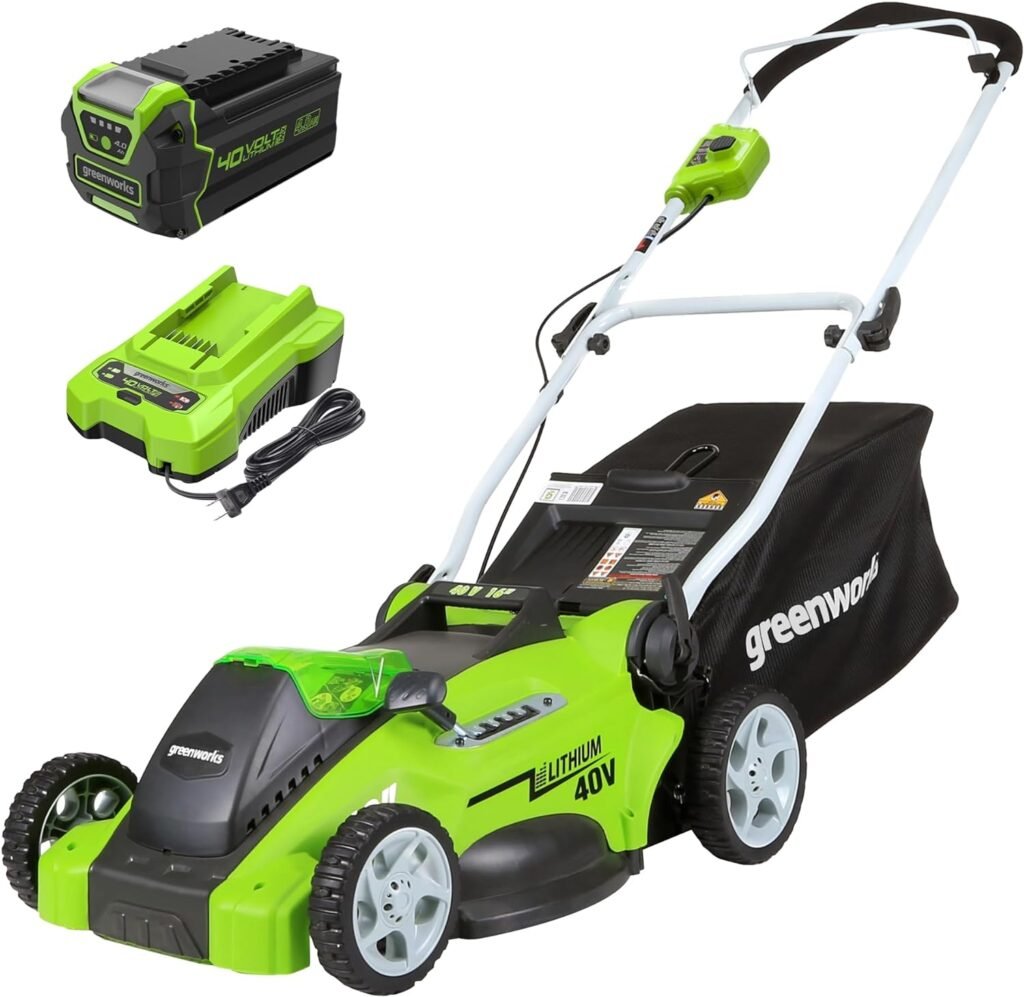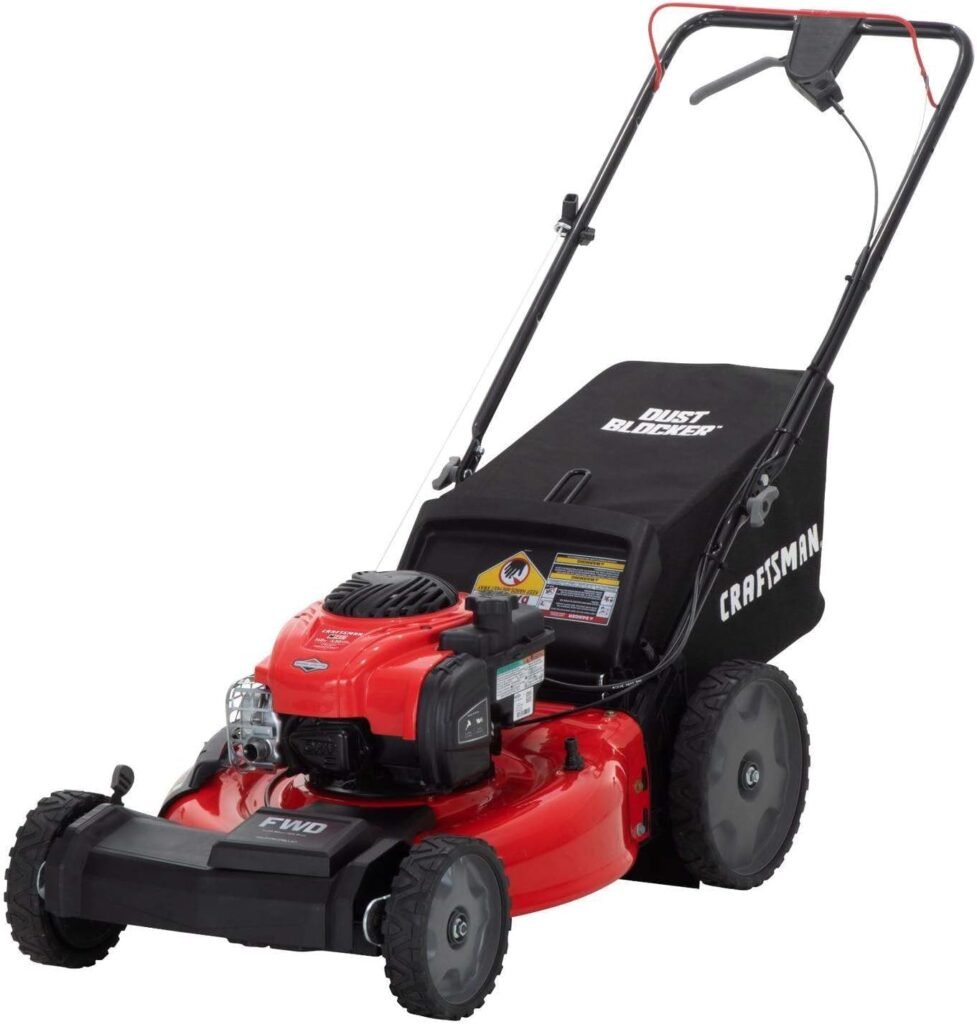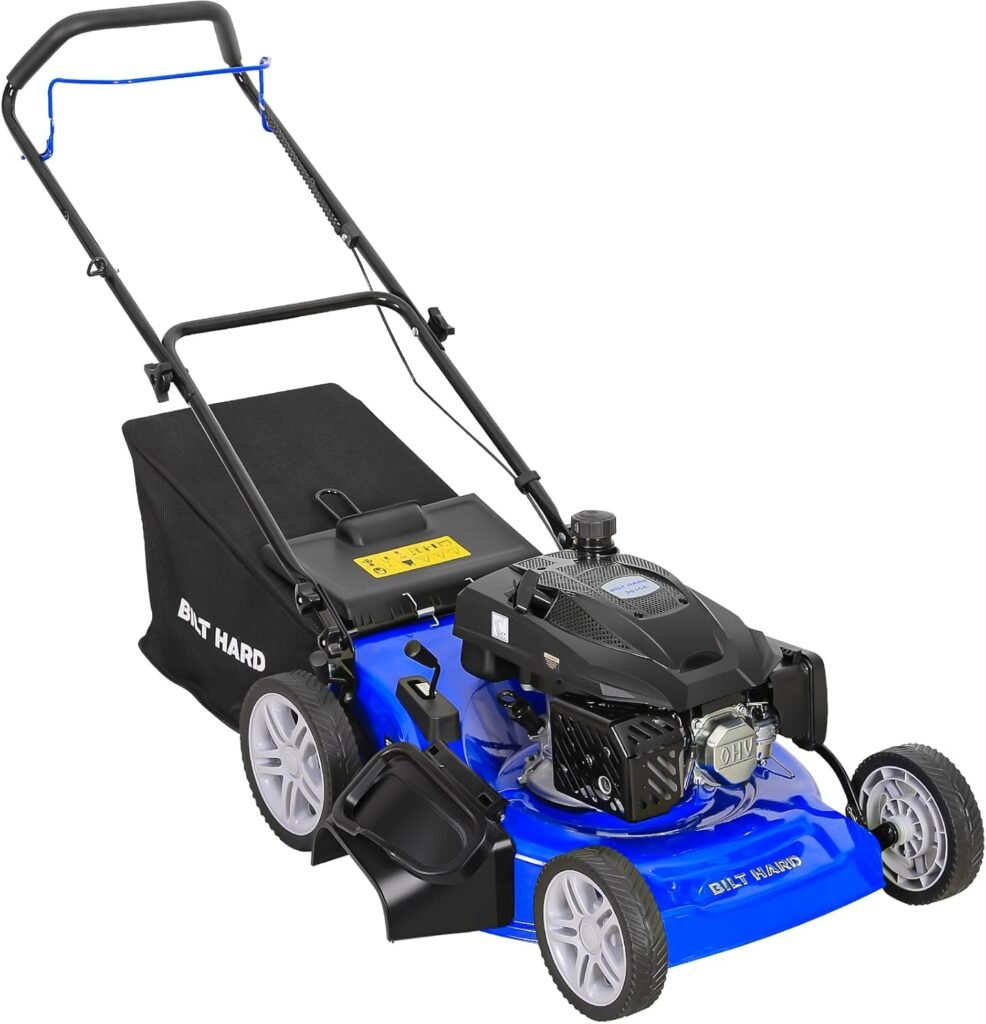Allen Top 3 Lawn Mowers
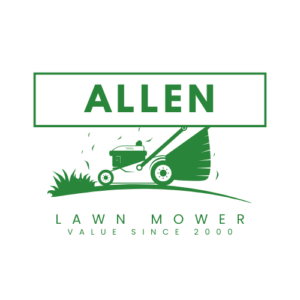
CRAFTSMAN Lawn Mower
- Self Propelled Gas Lawn Mower
- Powerful 159CC OHV Gas Engine
- Dual-Lever Adjustable Cutting Height
- Front Wheel Drive
BILT HARD 21 Inch Lawn Mower Gas Powered
- Powerful Engine – Featuring a Robust 201CC 4-Stroke OHV
- Efficient & Versatile Mowing
- Adjustable Cutting Height
- Comfortable Mowing Experience
Allen’s 9 critical Points to Consider When Buying a Lawn Mower
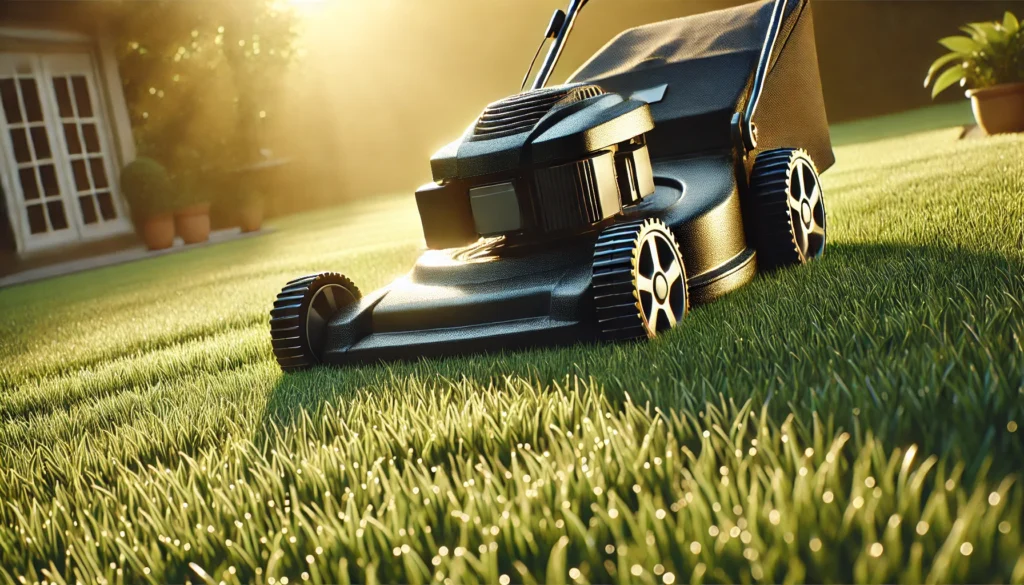
A well-manicured lawn is a source of pride for many homeowners, and choosing the right lawn mower is crucial to achieving that perfect look. With countless options available, finding the best lawn mower can feel overwhelming. This 9 point comprehensive guide will help you navigate the critical factors to consider, from lawn size to storage space, so you can make an informed decision.
1. Understanding Your Lawn Size
The size of your lawn is a key factor in determining the type of lawn mower you need:
- Small Lawns (up to 1/4 acre): A push mower or corded electric mower is sufficient for these areas. These mowers are lightweight and easy to maneuver, making them ideal for compact spaces.
- Medium Lawns (1/4 to 1/2 acre): Self-propelled mowers are a good choice for medium-sized lawns as they reduce the effort required while still being efficient.
- Large Lawns (over 1/2 acre): For expansive lawns, riding mowers or zero-turn mowers are the most efficient options, saving time and reducing physical strain.
Knowing your lawn size helps narrow down your choices and ensures you select a mower that matches your needs.
2. Choosing the Right Type of Lawn Mower
Different types of lawn mowers cater to specific needs:
- Push Mowers: Perfect for small, flat lawns, these mowers are affordable and require minimal maintenance.
- Self-Propelled Mowers: Designed for medium lawns or hilly terrains, they use a powered mechanism to drive the wheels, making mowing easier.
- Electric Mowers (Corded or Cordless): Eco-friendly and quiet, these mowers are ideal for smaller areas. Cordless models offer freedom of movement but have limited battery life.
- Gas-Powered Mowers: Best for larger or uneven terrains, gas mowers provide more power and versatility.
- Riding Mowers: Essential for large lawns, they offer comfort and efficiency, with options for traditional or zero-turn steering.
- Robotic Mowers: A high-tech, automated solution for those who want hands-free lawn care.
3. Considering the Power Source
Your mower’s power source significantly affects its performance and maintenance requirements:
- Gas-Powered Mowers: Provide high power and performance, making them ideal for tough mowing conditions. However, they require regular maintenance and emit greenhouse gases.
- Electric Mowers: These can be corded or cordless. Corded mowers are eco-friendly but limited by the cord’s length, while cordless models offer flexibility with limited run time.
- Manual Reel Mowers: Require no fuel or electricity, making them environmentally friendly. However, they’re best suited for small, flat lawns.
4. Understanding Cutting Width
The cutting width, or the width of the mower’s blade, determines how much grass is cut in a single pass:
- Small Cutting Deck (14-20 inches): Suitable for small lawns or areas with many obstacles.
- Medium Cutting Deck (21-36 inches): Ideal for medium-sized lawns, balancing efficiency and maneuverability.
- Large Cutting Deck (37 inches or more): Found on riding mowers, these are best for large, open areas.
Choosing the right cutting width ensures efficient mowing and minimizes the time spent on lawn care.
5. Evaluating Terrain and Obstacles
The terrain and layout of your lawn influence the type of mower you should choose:
- Flat Terrains: Most mowers work well on flat surfaces, including push mowers and electric models.
- Hilly or Uneven Terrains: Self-propelled mowers or riding mowers with strong traction are essential for hilly areas.
- Obstacles: If your lawn has trees, flower beds, or tight corners, consider a mower with good maneuverability, like a zero-turn mower or a compact push mower.
6. Examining Features and Adjustments
Modern lawn mowers come with various features to enhance convenience and efficiency. Consider these key options:
- Height Adjustment: Allows you to customize the cutting height for different grass types and conditions.
- Mulching, Bagging, and Side Discharge: Choose a mower that supports your preferred method of handling grass clippings.
- Washout Ports: Simplify cleaning by allowing you to connect a hose to the mower.
- Ergonomic Handles: Improve comfort during extended use.
Prioritize features that align with your specific needs to maximize the mower’s utility.
7. Factoring in Storage Space
The size and design of your mower impact storage requirements:
- Foldable Handles: Many modern mowers feature foldable handles for compact storage.
- Riding Mowers: These require a larger storage space, such as a shed or garage.
- Vertical Storage Models: Some electric mowers are designed for vertical storage, saving space in tight areas.
Ensure you have adequate space to store your mower safely and protect it from weather damage.
8. Setting a Realistic Budget
Lawn mowers vary widely in price, so setting a budget helps narrow down your options:
- Entry-Level Models ($100-$300): Basic push mowers and small electric mowers are affordable and suitable for small lawns.
- Mid-Range Models ($300-$800): Self-propelled and gas-powered mowers offer a balance of performance and cost.
- Premium Models ($1,000 and up): Riding mowers, robotic mowers, and high-end zero-turn mowers cater to large lawns and specialized needs.
Consider the total cost of ownership, including maintenance and fuel or electricity expenses.
9. Assessing Brand Reputation and Warranty
Choosing a mower from a reputable brand ensures durability and performance. Research customer reviews and ratings to gauge reliability. Additionally, pay attention to the warranty:
- Coverage Length: Look for warranties that cover at least 2-3 years.
- Inclusions: Ensure the warranty covers key components like the engine and deck.
- Service Availability: Choose brands with accessible service centers or repair options in your area.
My Final Thoughts
Buying a lawn mower is an investment in your home’s curb appeal and your personal convenience. By considering factors like lawn size, terrain, power source, and budget, you can find the perfect mower to suit your needs. Take your time to research and compare models, and don’t hesitate to seek expert advice from local retailers. With the right mower, maintaining a beautiful lawn will be easier and more enjoyable than ever.
